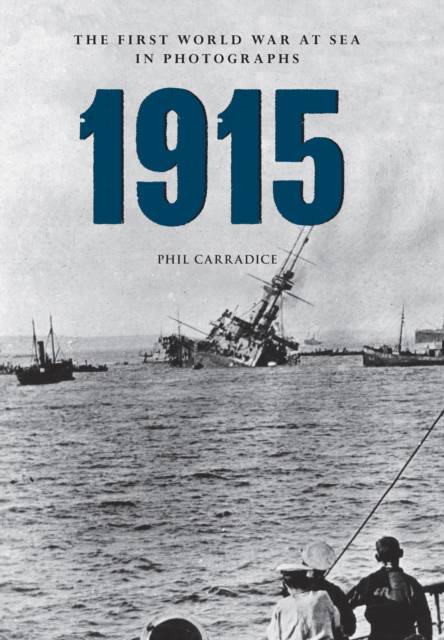
- Afhalen na 1 uur in een winkel met voorraad
- Gratis thuislevering in België vanaf € 30
- Ruim aanbod met 7 miljoen producten
- Afhalen na 1 uur in een winkel met voorraad
- Gratis thuislevering in België vanaf € 30
- Ruim aanbod met 7 miljoen producten
Zoeken
Omschrijving
Submarines and blockades dominated the war at sea in 1915. The major event was the sinking by U-20 of the Lusitania, which edged America closer to war. The Germans had announced a blockade of Britain in February, using submarines to sink and harry shipping. A British blockade of Germany was announced in March in retaliation. Using its surface fleet to stop neutral vessels, the British attempt was more successful. The British submarine force was also successful, commanders leading patrols into the Black Sea and the Baltic Sea. Surface ship engagements would be fought by battlecruisers at the Battle of the Dogger Bank, and by cruisers off the coast of Chile as the German warship Dresden was sunk in the Pacific. On the east coast of Africa, the raider Königsberg was sunk in the war's first instance of sea-air cooperation. Attempts to bully Turkey into surrendering saw numerous Allied warships sunk off the Dardanelles and an amphibious landing took place there in an attempt to create a supply route into the Black Sea. By the end of the year it was obvious that the invasion of Turkey had failed and the soldiers were evacuated. At the same time, Allied shipping was being used to evacuate the Serbian army from the coast of Albania, the biggest seaborne evacuation that there had ever been until Dunkirk.
Specificaties
Betrokkenen
- Auteur(s):
- Uitgeverij:
Inhoud
- Aantal bladzijden:
- 144
- Taal:
- Engels
- Reeks:
Eigenschappen
- Productcode (EAN):
- 9781445622378
- Verschijningsdatum:
- 15/07/2014
- Uitvoering:
- Paperback
- Formaat:
- Trade paperback (VS)
- Afmetingen:
- 163 mm x 231 mm
- Gewicht:
- 340 g

Alleen bij Standaard Boekhandel
+ 53 punten op je klantenkaart van Standaard Boekhandel
Beoordelingen
We publiceren alleen reviews die voldoen aan de voorwaarden voor reviews. Bekijk onze voorwaarden voor reviews.








